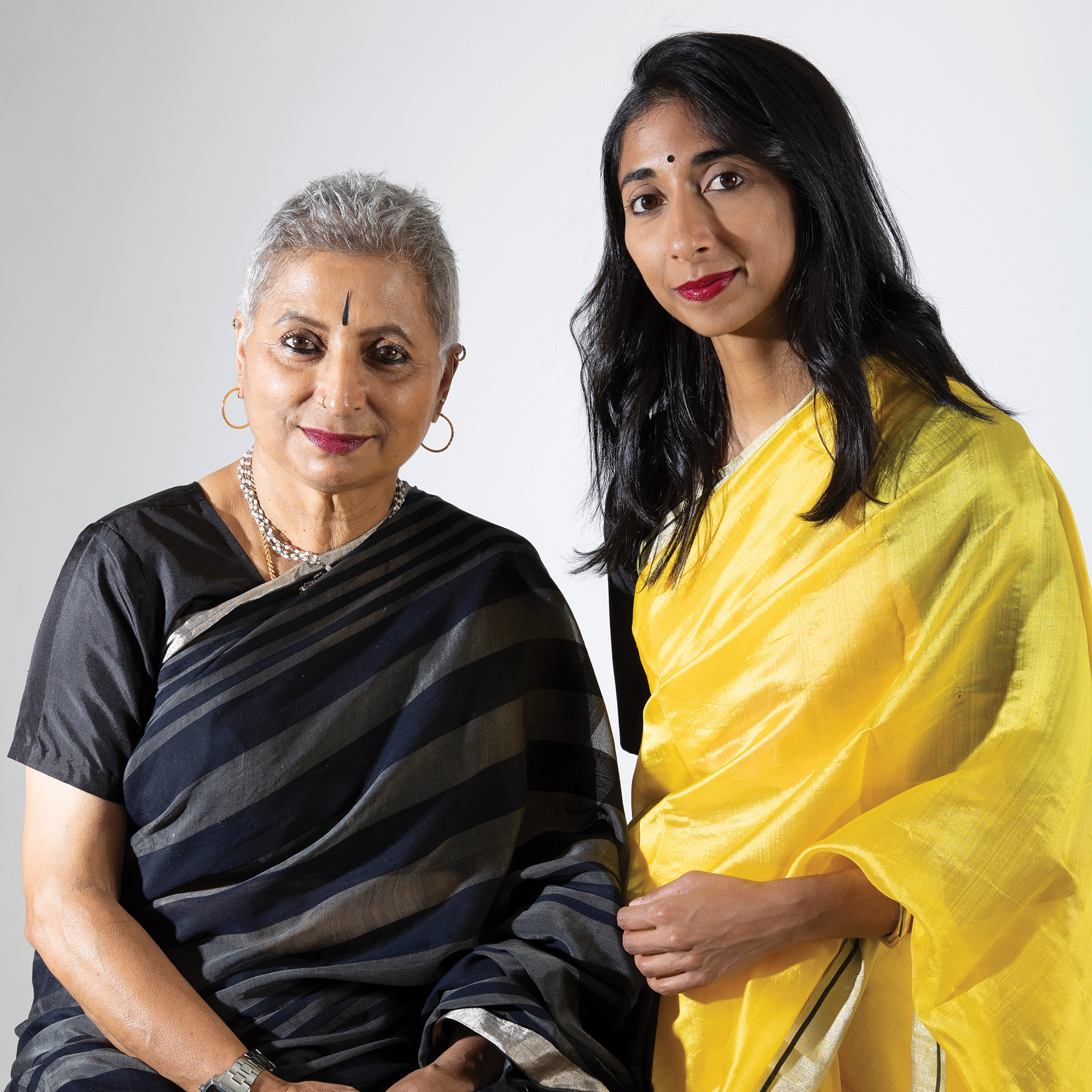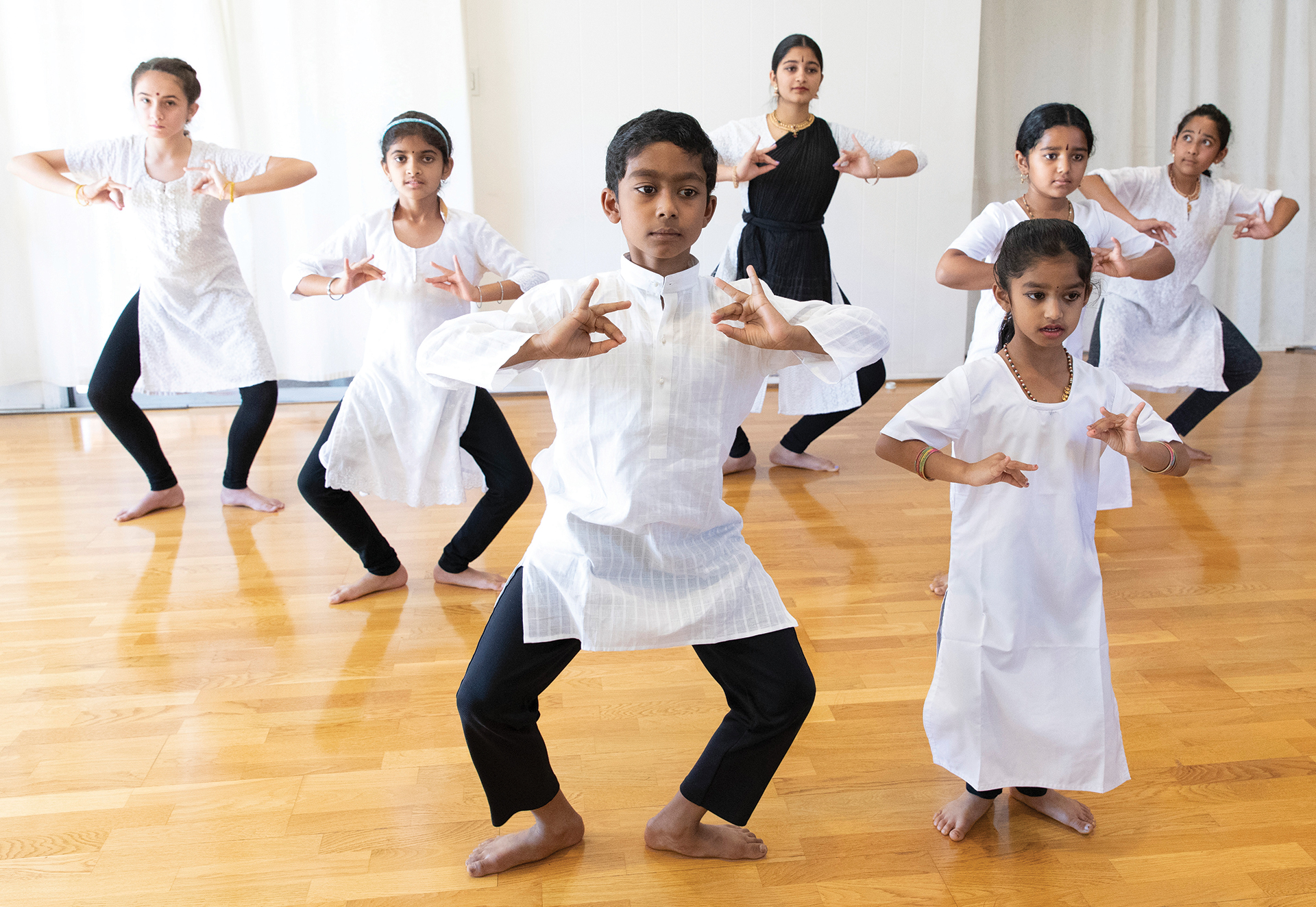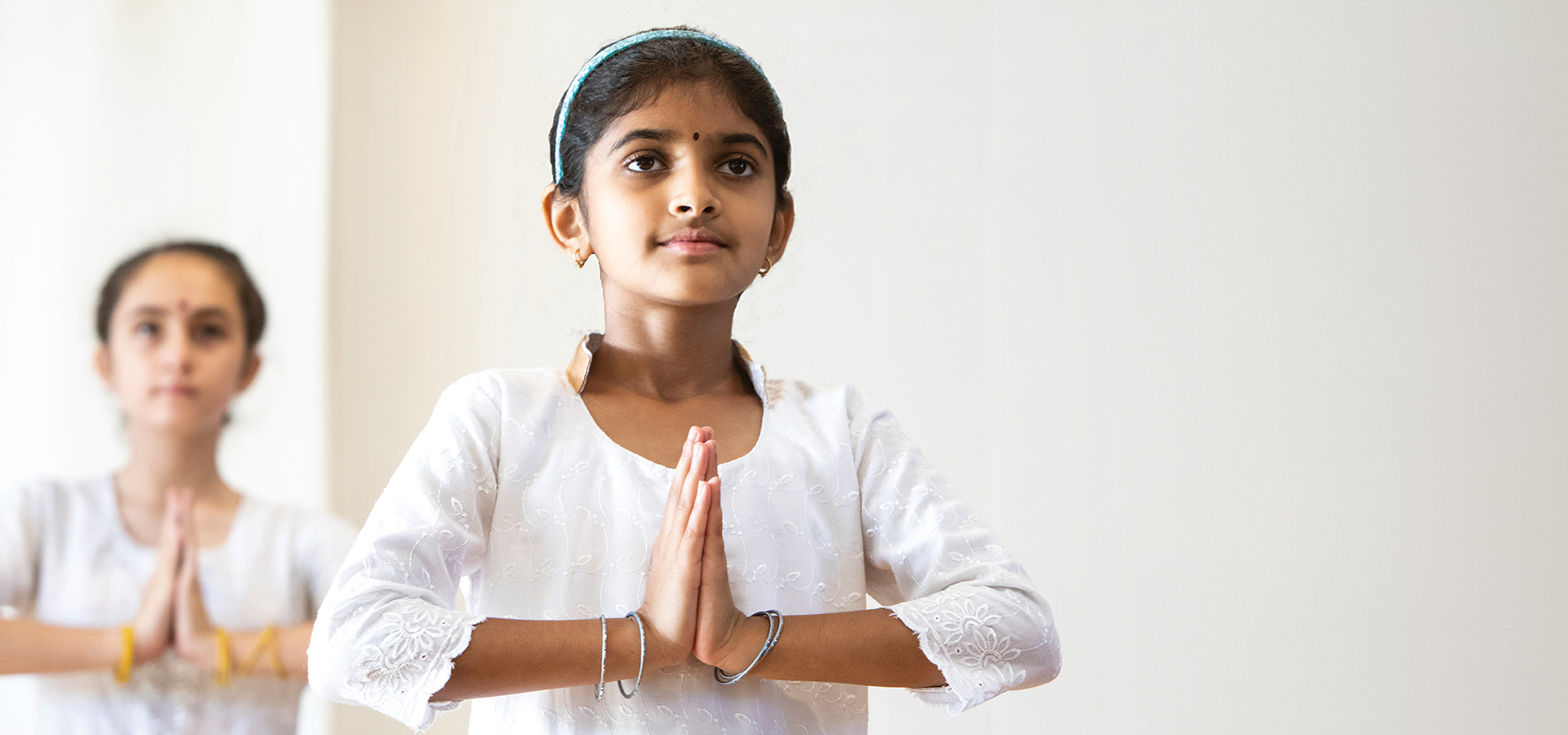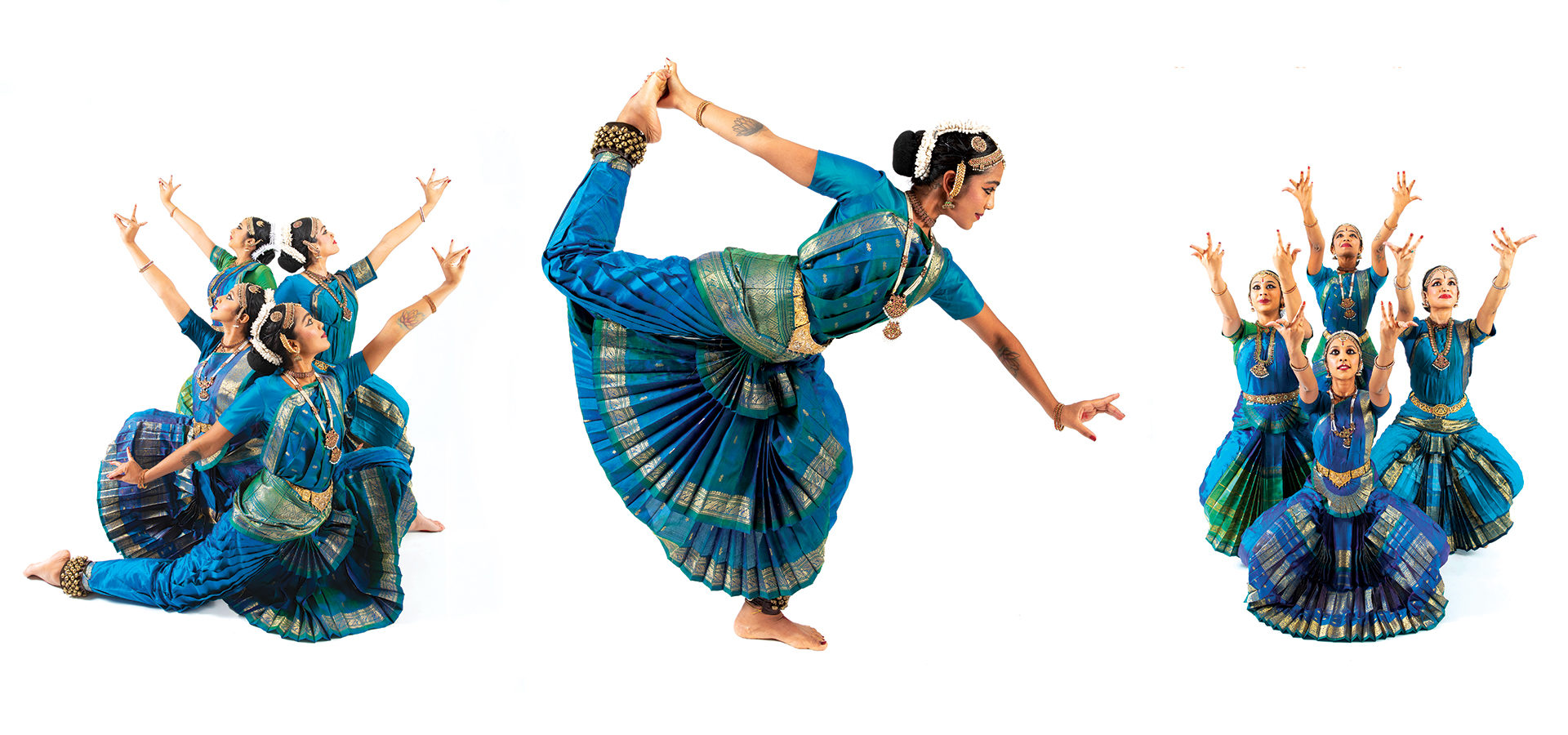The Story Behind the Founding of the Prestigious Rangoli Dance Company in Sherman
Oaks Elegant gestures.
-
CategoryPeople
-
Written and photographed byRose Eichenbaum
It all began when painter and mandala artist Malathi Iyengar wanted to introduce her 6-year-old daughter, Lakshmi, to her Indian heritage. She zeroed in on bharata natya, India’s classical dance form, which she believed would impart the history, culture and traditions of her native land. To further her goal, Malathi, who had moved to Los Angeles in 1974 with her husband, Suresh, returned to her birthplace, Bangalore, South India. She was hoping to find a dancer who could teach Lakshmi not only the art form’s steps, gestures and rhythms, but its beauty, elegance, spirituality and ancient stories.

Malathi Iyengar with her daughter, Lakshmi
It all came together when she met Guru Narmada, a classically trained dancer who agreed to mentor not only Lakshmi, but Malathi as well. Twice a year for the next eight years, the dancer made the 22-hour flight from Bangalore to LA, where at the family’s Sherman Oaks home, she trained Malathi and Lakshmi. For both mother and daughter, it became about more than embracing their heritage. It wasn’t long before both realized they had what it takes to become exceptional dancers. In 1992 at the age of 38, when most dancers retire from performance, Malathi gave her debut solo concert. Lakshmi, who would train some days for nine hours, gave hers the following year at the age of 11.
“Bharata natya is a mesmerizing and expressive art form because each body part is dancing—eyes, face, hands, feet, torso, back, legs, shoulders. Stories are conveyed not with words, but through facial expressions and gestures.”
“Performing my dance solo was just the beginning of my dance journey,” says Malathi. “I had to ask myself how to maintain the connection between my cultural roots, this vibrant art form and my adopted home in Southern California.” The answer became clear when Guru Narmada suggested Malathi start teaching and presenting dance. In 1992 she created Rangoli Dance Company and School in Sherman Oaks. She also enrolled in UCLA’s Master of Fine Arts program to study performance and choreography under the mentorship of the late, well-regarded modern dancer, Marion Scott. Now, nearly 30 years later, Rangoli Dance Company is one of the most respected dance companies in the country, presenting concerts and festivals and hosting renowned musicians and artists from India. Its success is due in great part to Malathi’s artful staging, choreography, and fierce commitment to preserve the essence and authenticity of this ancient performance art.

“We want to ensure that audiences who see our concerts find them uplifting, stimulating and gratifying,” says Lakshmi. “Bharata natya is a mesmerizing and expressive art form because each body part is dancing—eyes, face, hands, feet, torso, back, legs, shoulders. Stories are conveyed not with words, but through facial expressions and gestures. It’s also a highly musical art, which requires that dancers grasp intricate rhythmic patterns and beat cycles much like musicians do.”
Training in bharata natya usually begins at the age of 6 with foundational steps and hand positions. After eight or nine years of study, students are expected to perform a solo concert for about 45 minutes to an hour. Whether they continue dancing beyond that or not, Malathi says it teaches them discipline and a determination to go after the things they desire in life—a sentiment that is echoed by her students.

“Bharata natya taught me how to carry myself with pride and confidence and not be afraid to reveal myself,” says 17-year-old Nina Raji Krishnan, who has been training with Rangoli for seven years.
For 26-year-old Nishitha Viswanathan, who started with Rangoli at the age of 6, bharata natya has also been transformative. “It helped me set the foundation for everything I’ve chosen to pursue in my life and to approach it with confidence and humility,” she shares.
Malathi believes that dance training is essentially life training. “I tell my students and dancers that I hope my insistence that you be precise in your art will extend to everything you do—how you sit, how you walk, how you live. I feel it’s my obligation to leave them with the knowledge that you cannot separate your art from your life.”
For more on Rangoli Dance Company and School go to rangoli.org
Join the Valley Community









